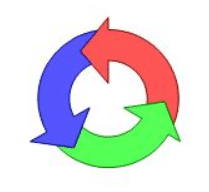How Do You Control a Policy and Procedure Template?

Having a control system for policy and procedure templates is essential. It ensures consistency and conformity throughout the organization, making management easier. A well-structured control system allows for version control, ensuring only the latest policies and procedures are used. In addition, tracking changes made over time is made simpler. How do you control a policy and procedure template?
The Importance of Having a Control Mechanism for Policy and Procedure Templates
Having a control system means policies and procedures are in line with legal regulations, industry standards, and best practices. This promotes compliance and reduces risks of non-compliance. It also helps to stay current with changing regulations.
One distinct trait of having a control system is the ability to adjust policies and procedures to particular roles or departments. This customization makes sure employees have access to the information they need, making work clearer and quicker.
Implementing automated tools or software solutions will help optimize the control system. These tools ease the process of creating, editing, approving, and distributing policies and procedures. They provide central repositories and enable collaboration between different people involved in policy management.
Pro Tip: Regularly review and update policy and procedure templates to stay relevant and in line with organizational goals. Use employee feedback to upgrade the control system.
Remember: controlling policies and procedures is a wild ride!
Components of and Effective Control Mechanism
An effective control mechanism includes components for managing and governing a policy and procedure template. These components ensure smooth implementation and enforcement, while also providing consistency and compliance across the organization.
These components include:
- Clear Objectives: Aimed at achieving desired outcomes.
- Defined Roles and Responsibilities: To assign who is accountable for various aspects of controlling the policy.
- Monitoring and Evaluation: To assess the effectiveness of the policy.
- Documentation: To provide transparency and accountability.
- Continuous Improvement: To foster feedback, analyze data-driven insights, and adapt to changing needs.
Further, clear communication channels must be established to inform stakeholders about the policy. This ensures understanding, addresses concerns, and invites input from relevant parties.
Harvard Business Review stresses the importance of a control mechanism in managing complex policies. It suggests that organizations achieve better governance outcomes by implementing effective control mechanisms with the components outlined above. Maintaining control mechanisms is and ongoing challenge that requires constant vigilance.
Implementing and Maintaining Control Mechanisms
Ensuring control mechanisms are implemented and maintained is vital for effective policy and procedure template management. This ensures accuracy and consistency to the desired guidelines, reducing any mix-ups and errors.
- Specify roles and duties: Allocate specified persons or teams to manage the implementation and upkeep of the policy and procedure template. This reinforces responsibility and makes sure tasks are completed proficiently.
- Periodic reviews and alterations: Carry out regular reviews of the template to recognize any outdated or unnecessary information. Modify procedures as needed to mirror changes in rules or organizational activities.
- Record management: Design a system for storing and cataloging policy and procedure papers, guaranteeing easy access for authorized personnel. This helps with efficient control and retrieval of information.
- Learning programs: Supply comprehensive training to staff members on the policy and procedure template. This equips them with the necessary understanding to comprehend, adhere to, and add to the continuous upkeep of these documents.
It is also crucial to document any changes made to the policy and procedure template, along with the motivations behind those modifications. Monitoring changes can help with noticing habits or persistent problems that may require deeper consideration.
To boost control mechanisms further, think about executing a strict quality assurance system that includes regular audits or appraisals. These evaluations help recognize potential gaps or non-conformity issues, allowing prompt corrective actions.
By emphasizing clear roles, periodic updates, well-organized documentation, comprehensive training programs, documentation of changes made, and regular auditing attempts – organizations can successfully implement and maintain control mechanisms for their policy and procedure templates.
Monitoring and continual improvement: Because policies and procedures are like fashion trends – they need consistent monitoring and updating, otherwise you’ll be wearing those bell bottoms after they’ve gone out of style.
Monitoring and Continuous Improvement
Regular evaluation is essential; it entails assessing implemented policies and procedures for effectiveness and compliance with organizational goals and industry standards. Feedback incorporation is key; stakeholders like employees and clients can offer valuable suggestions to refine processes and meet emerging needs. Adaptability to change is crucial; a flexible template should be updated regularly to stay relevant and optimum. Moreover, it’s vital to create a culture of open communication, encouraging innovation and learning from mistakes.
An example of the power of monitoring and continuous improvement is a tech company. Initially known for conventional policies, they changed their policy template to focus on innovation. They closely monitored results and improved based on feedback from employees. As a result, they became and industry disruptor with groundbreaking products.
Ultimately, controlling a policy and procedure template is like herding cats. It’s impossible to get everyone on board, but you can at least try not to lose them along the way.
Control a Policy and Procedure Template
To control a policy and procedure template effectively, one must set clear guidelines and processes. Review and update regularly to ensure it reflects current regulations and best practices. Input from relevant stakeholders and periodic audits can help improve the template. Maintain a centralized repository and provide comprehensive training for employees to promote compliance and operational efficiency.
Utilize technology solutions to streamline the control process. Implement document management systems or online collaboration platforms for version control, accessibility, and real-time updates. These enable multiple users to collaborate on the template whilst maintaining a record of changes.
Foster a culture of compliance to ensure effective template control. Leadership support is essential to demonstrate the importance of policies and procedures. Communicate regularly, provide training sessions, and remind employees of the template’s significance.
In one organization, confusion arose regarding which version of the template was current. This caused outdated procedures to be followed, resulting in inefficiencies and non-compliance with industry regulations. To address this, they implemented a control system with version control protocols, regular reviews, and training sessions. Compliance levels improved significantly, leading to enhanced operational effectiveness.
Controlling a policy and procedure template is and ongoing job that needs attention to detail, stakeholder collaboration, technological support, leadership commitment, and constant evaluation. Invest in these areas and refine the control processes to maintain and up-to-date template that aligns with legal requirements and sustains a culture of compliance.
Frequently Asked Questions

Q1: How do I control a policy and procedure template?
A1: To control a policy and procedure template, you need to follow these steps:
- Identify the purpose and scope of the document.
- Establish the responsible party for managing and updating the template.
- Create a versioning system to keep track of changes.
- Implement a review and approval process.
- Distribute the template to the relevant stakeholders.
- Regularly review and update the template as needed.
Q2: What should be included in a policy and procedure template?
A2: A policy and procedure template should typically include the following sections:
- Title and purpose
- Scope and applicability
- Definitions
- Policies
- Procedures
- Roles and responsibilities
- References
Q3: How often should a policy and procedure template be reviewed?
A3: It is generally recommended to review a policy and procedure template at least once a year. However, the frequency of reviews may vary based on the industry, regulatory requirements, and internal processes. Significant changes in the business environment should also prompt and immediate review.
Q4: Who is responsible for maintaining a policy and procedure template?
A4: The responsibility for maintaining a policy and procedure template usually lies with the designated owner or manager of the template. This individual or team ensures that the template is up to date, accurate, and aligns with the organization’s objectives and requirements.
Q5: How can I ensure compliance with a policy and procedure template?
A5: To ensure compliance with a policy and procedure template, consider the following steps:
- Provide training and awareness programs to employees.
- Regularly communicate updates and changes to all stakeholders.
- Establish a monitoring and auditing process.
- Enforce consequences for non-compliance.
- Encourage feedback and suggestions for improvement.
Q6: Can I customize a policy and procedure template to fit my organization’s needs?
A6: Absolutely! It is essential to customize a policy and procedure template to align with your organization’s specific requirements, industry standards, and unique circumstances. This ensures that the template is a relevant and effective tool for managing policies and procedures within your organization.
















Leave a Reply